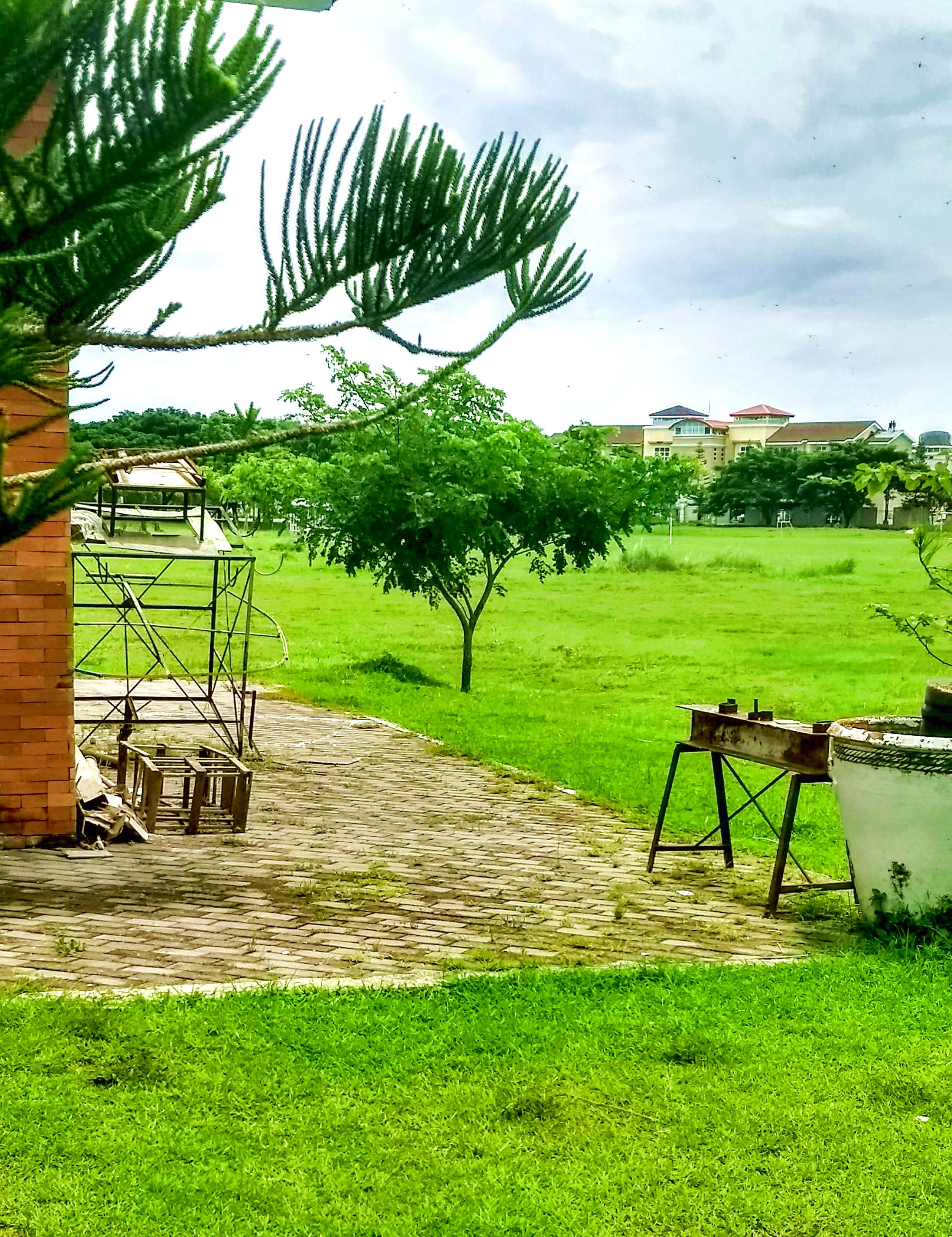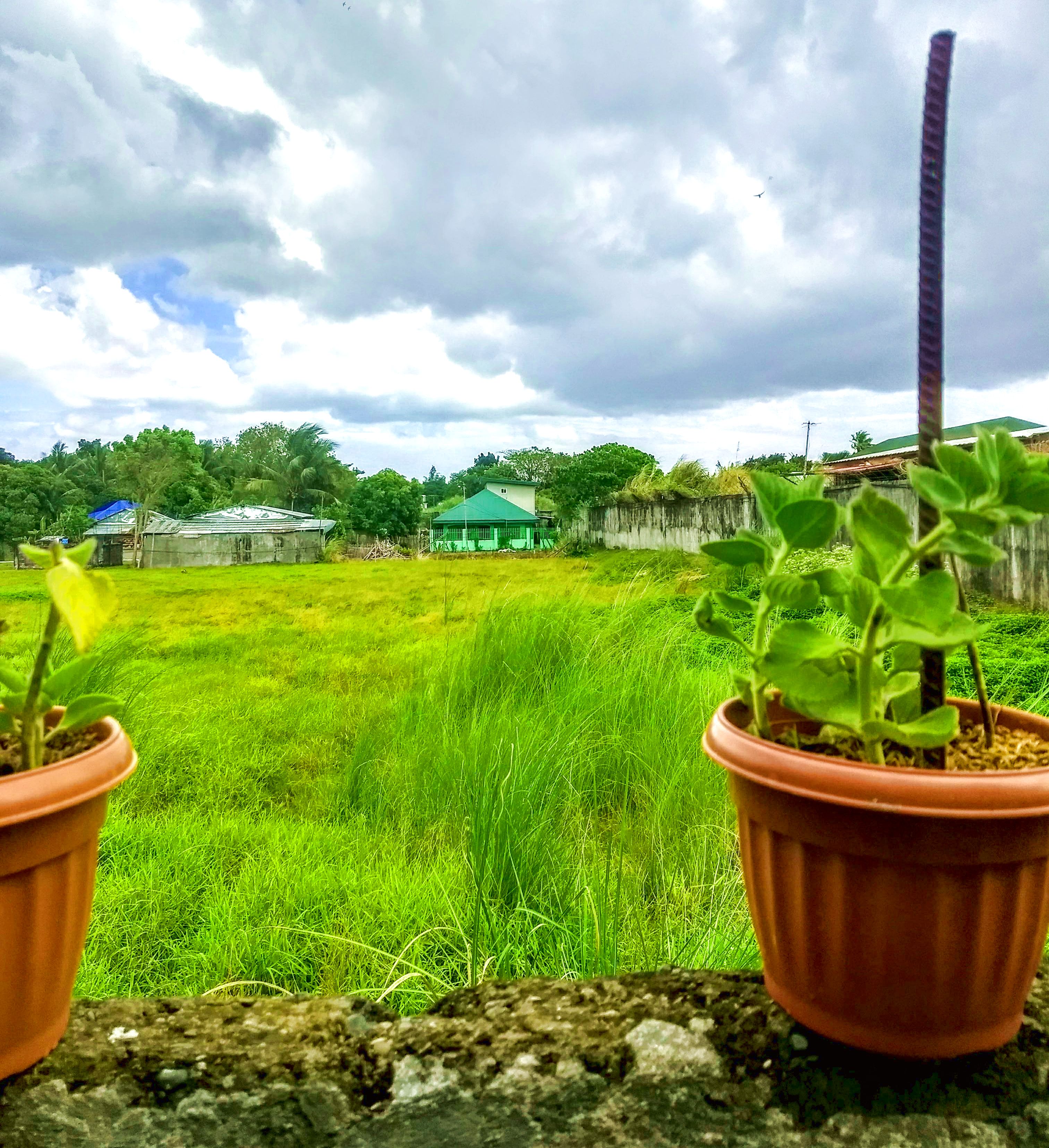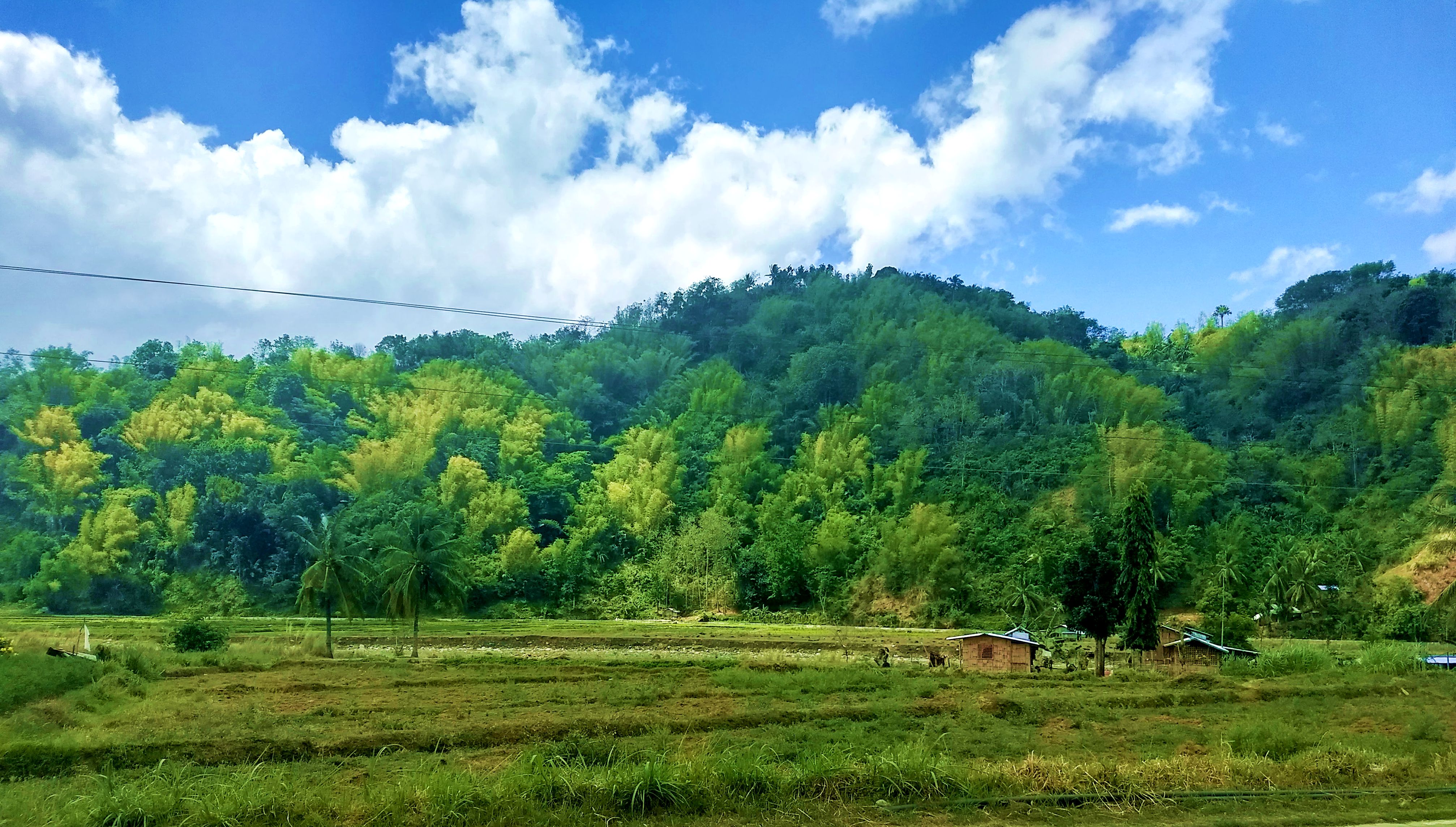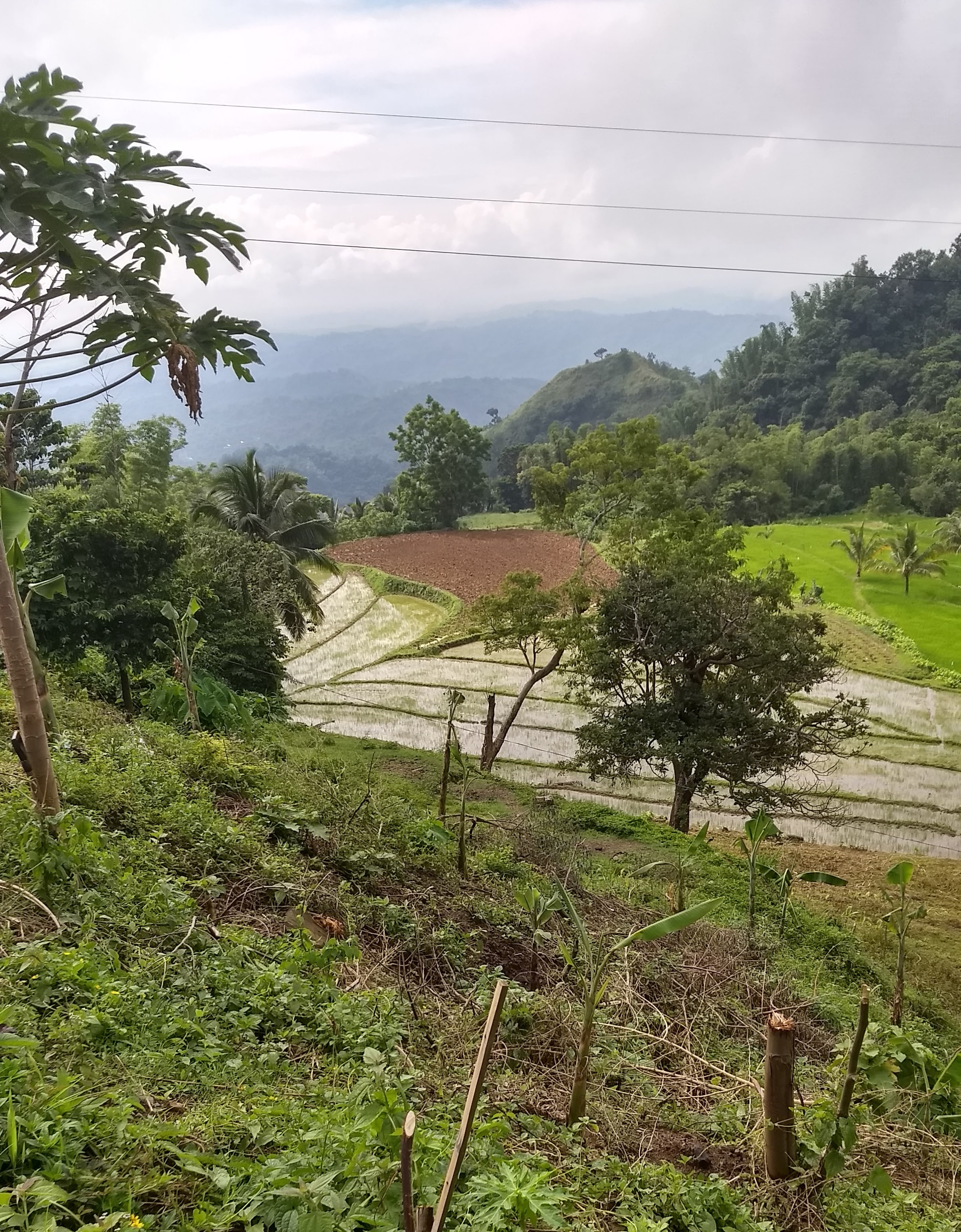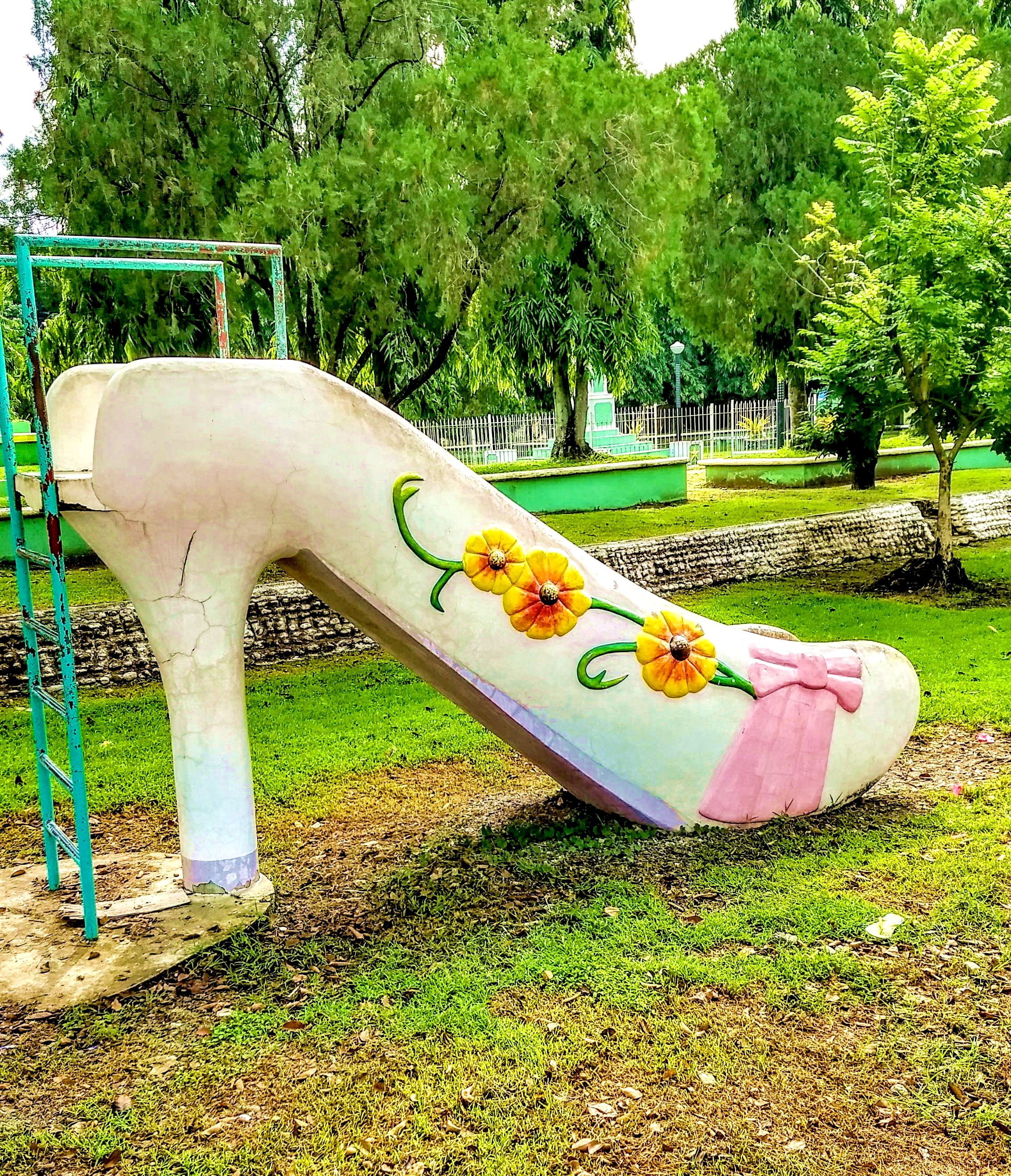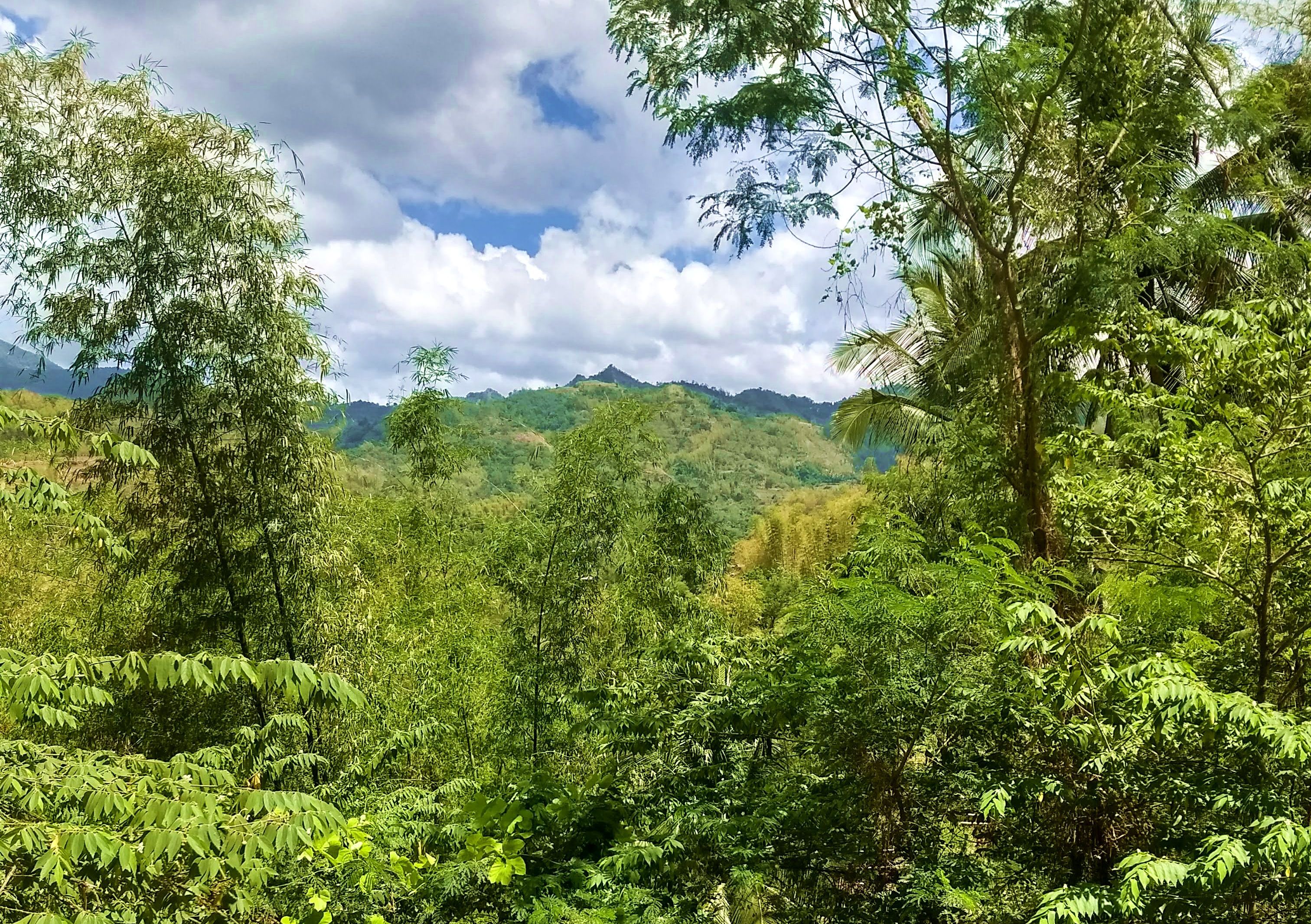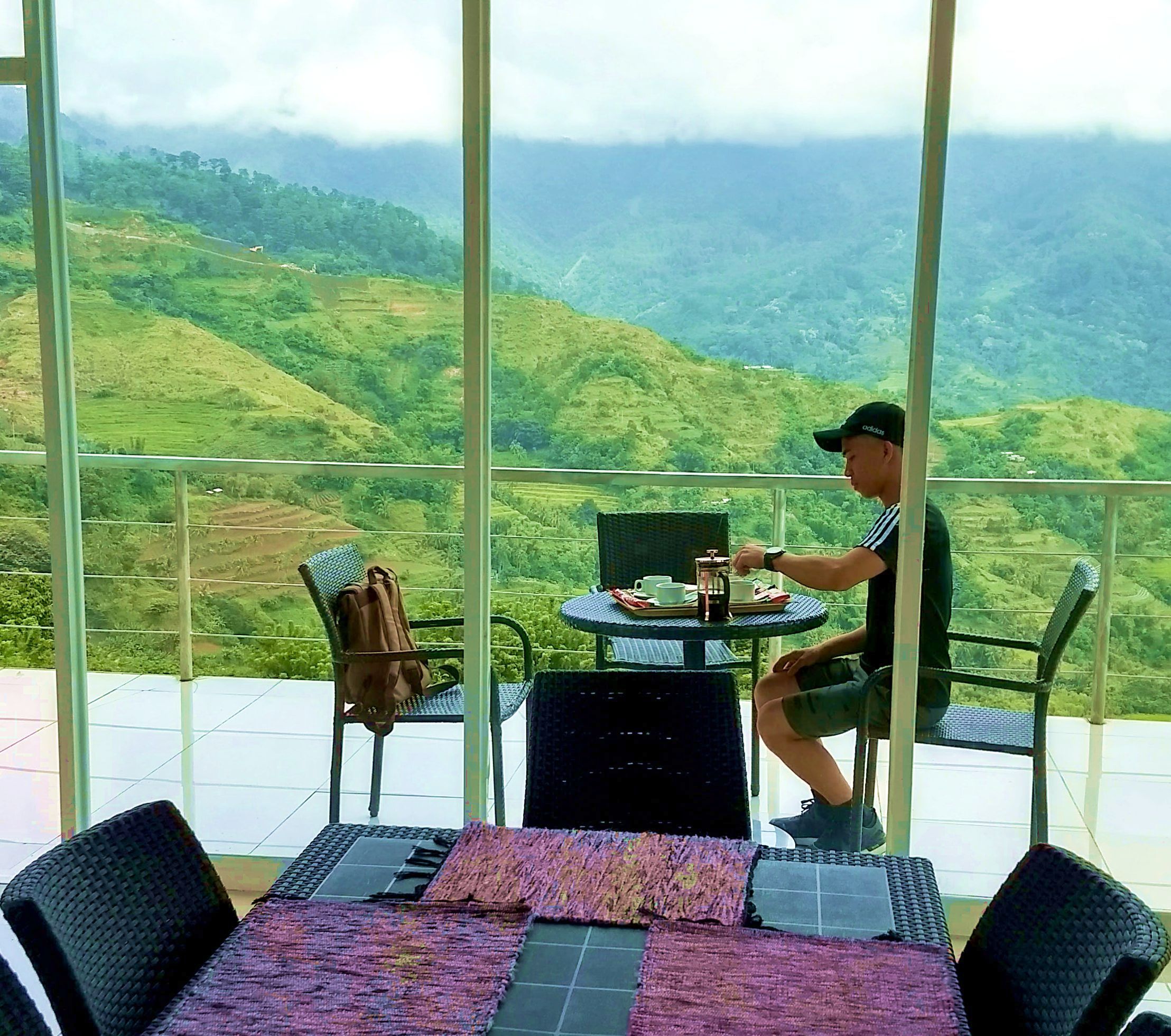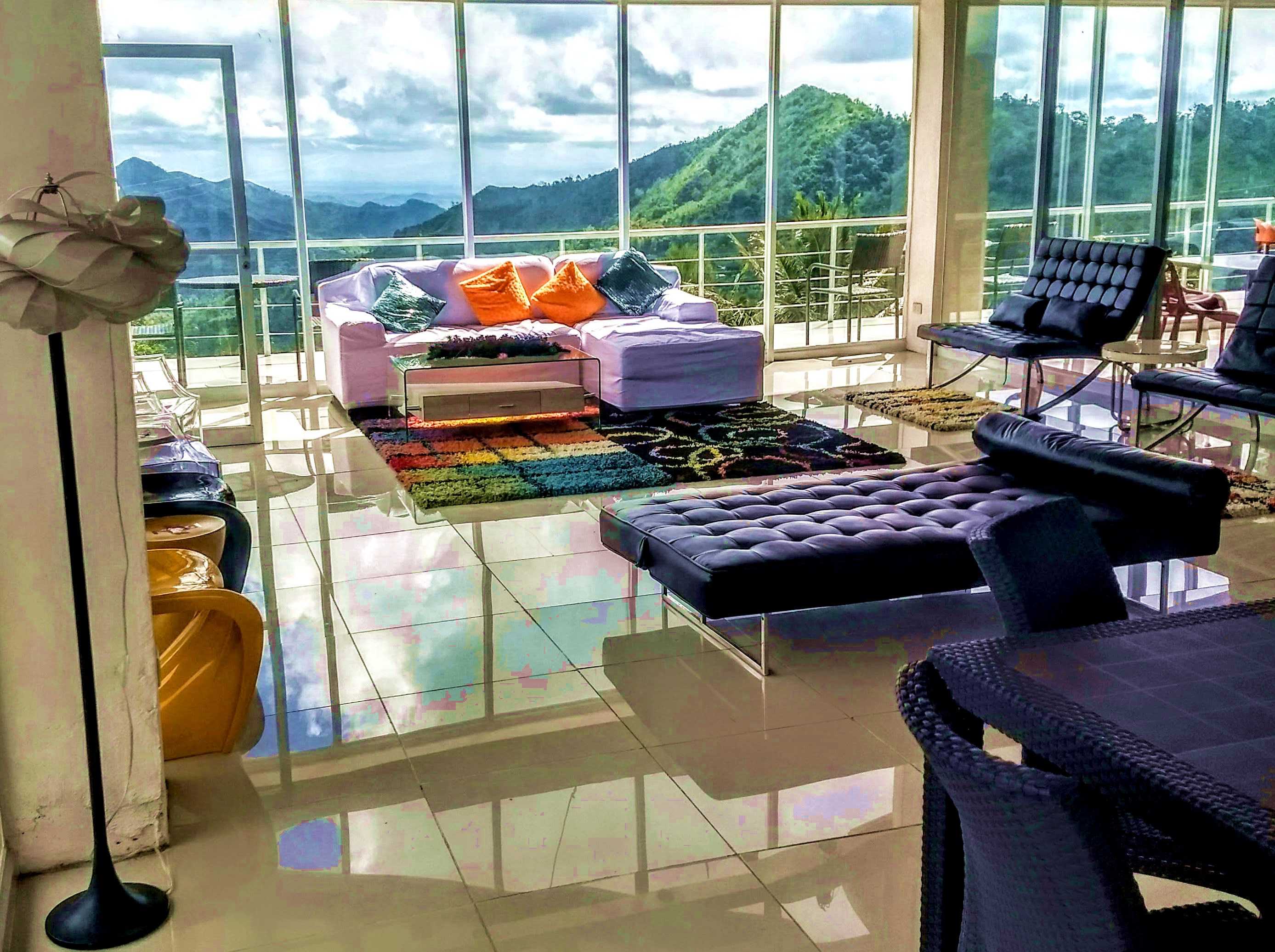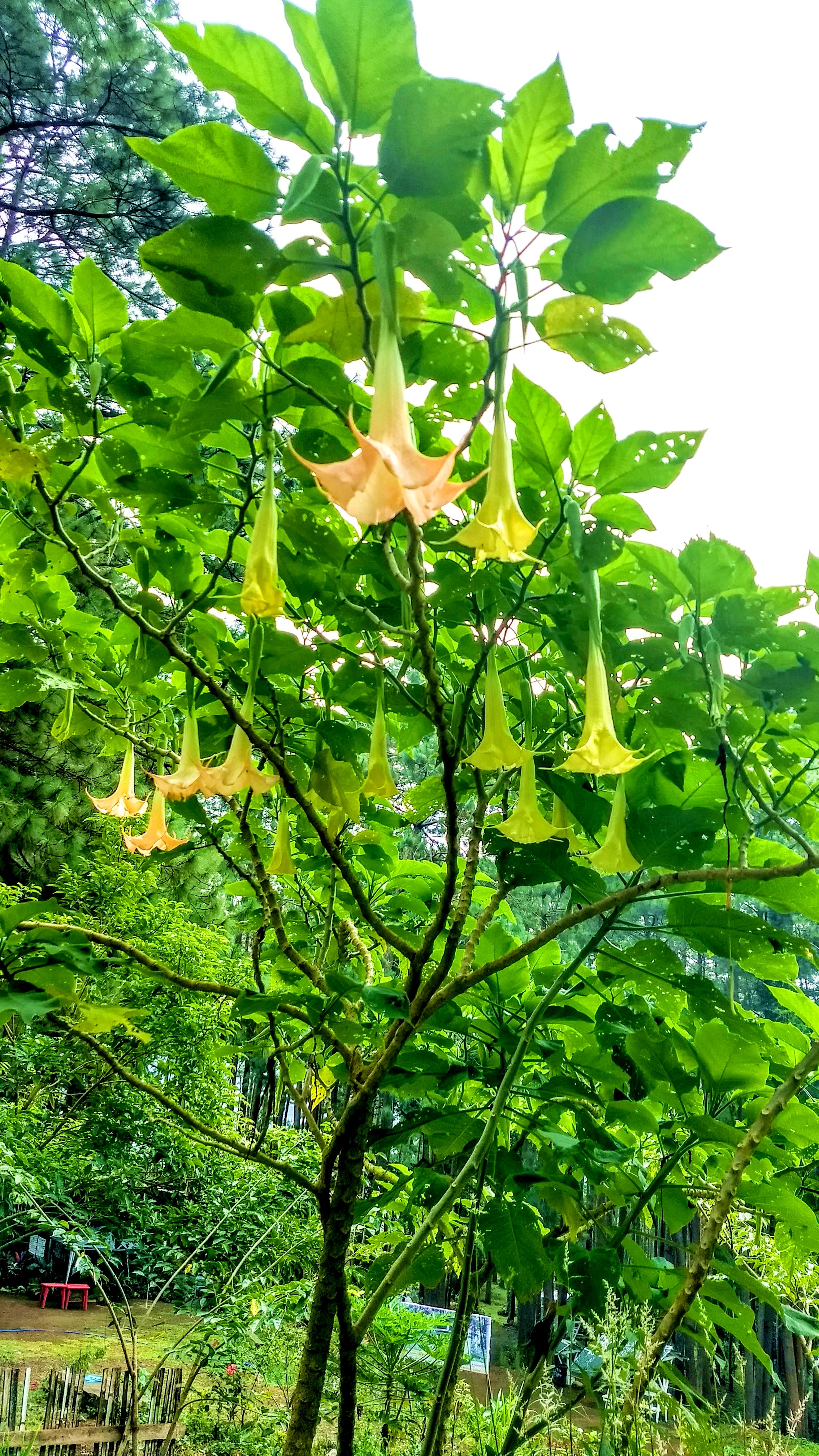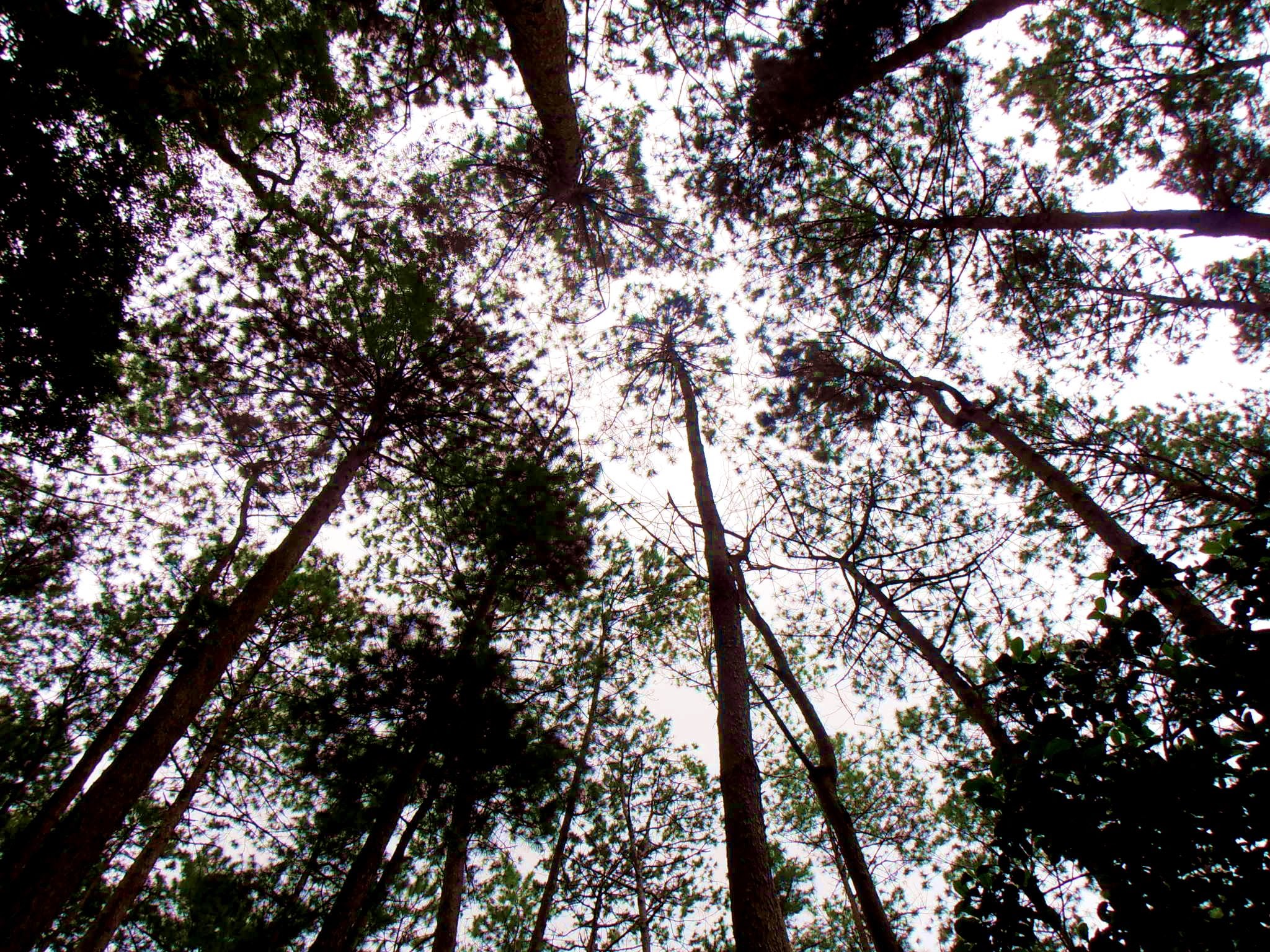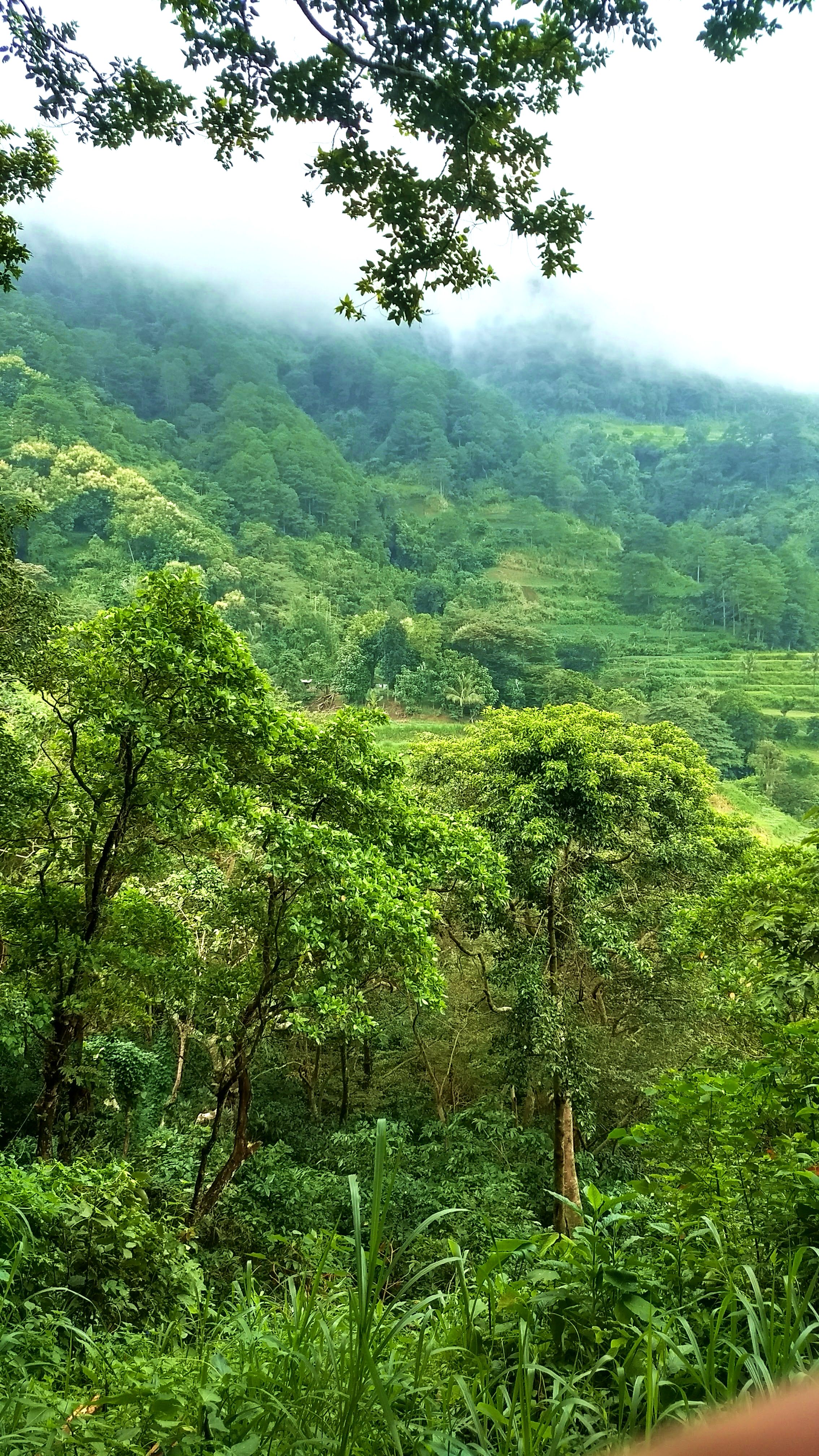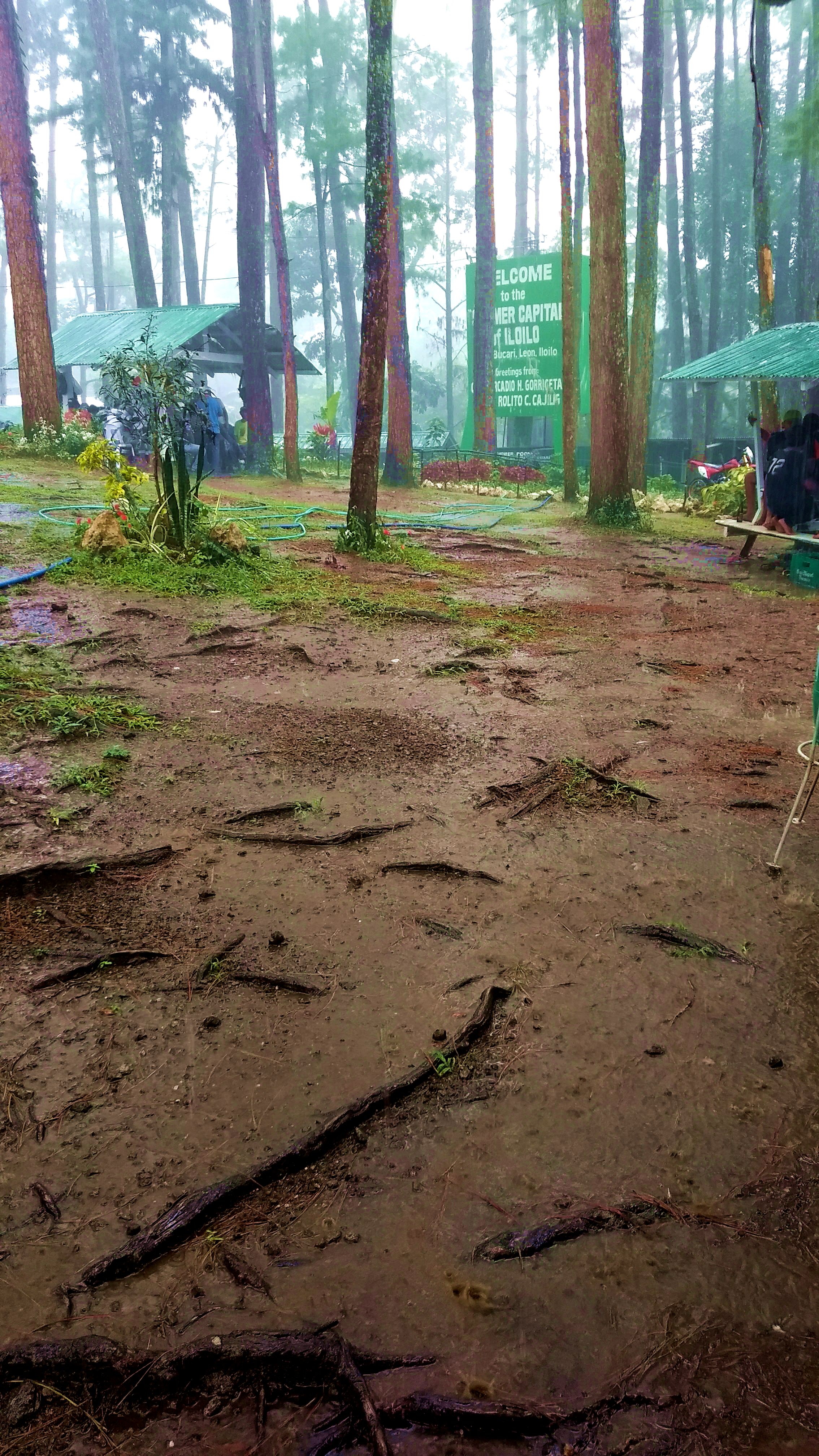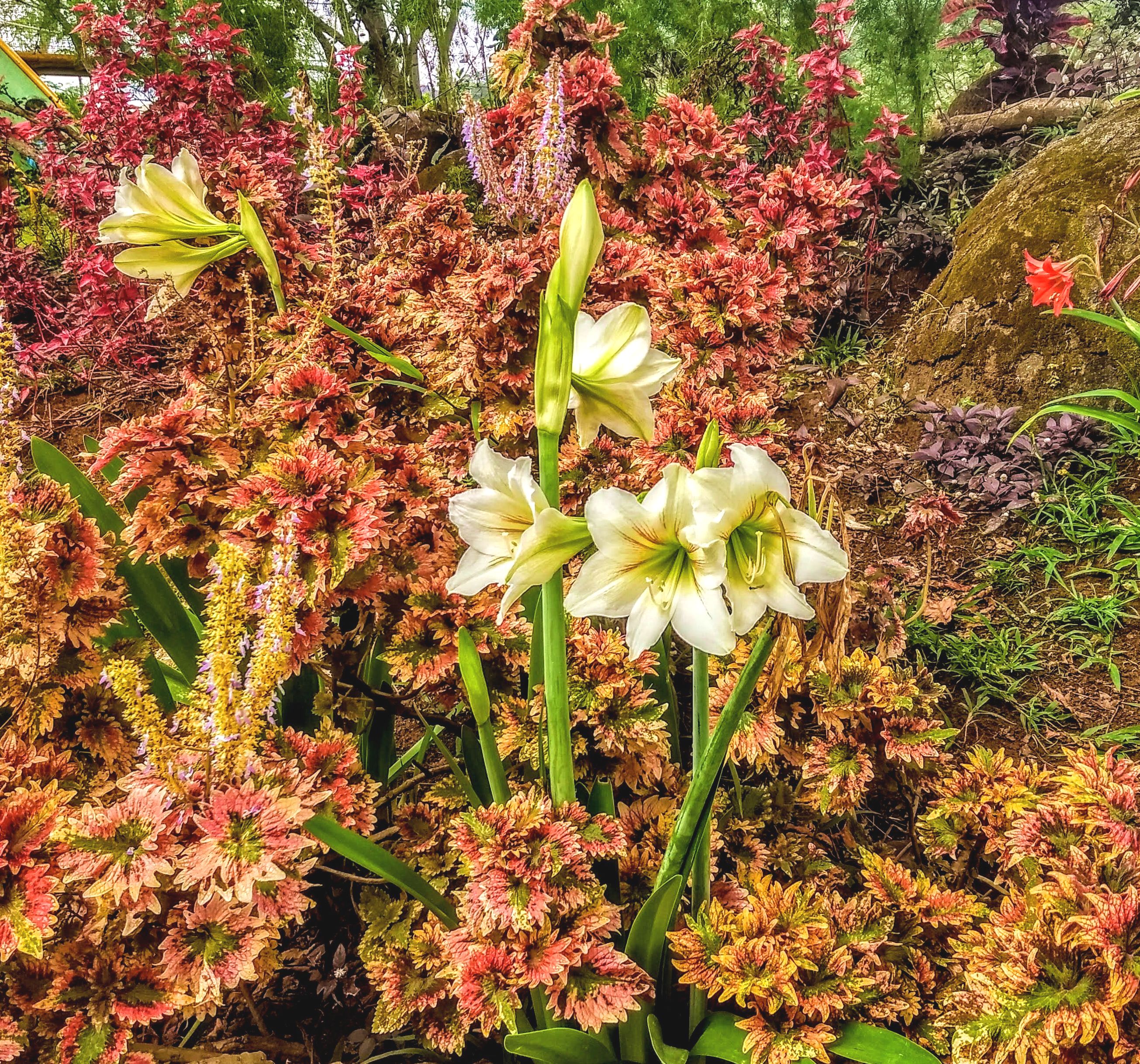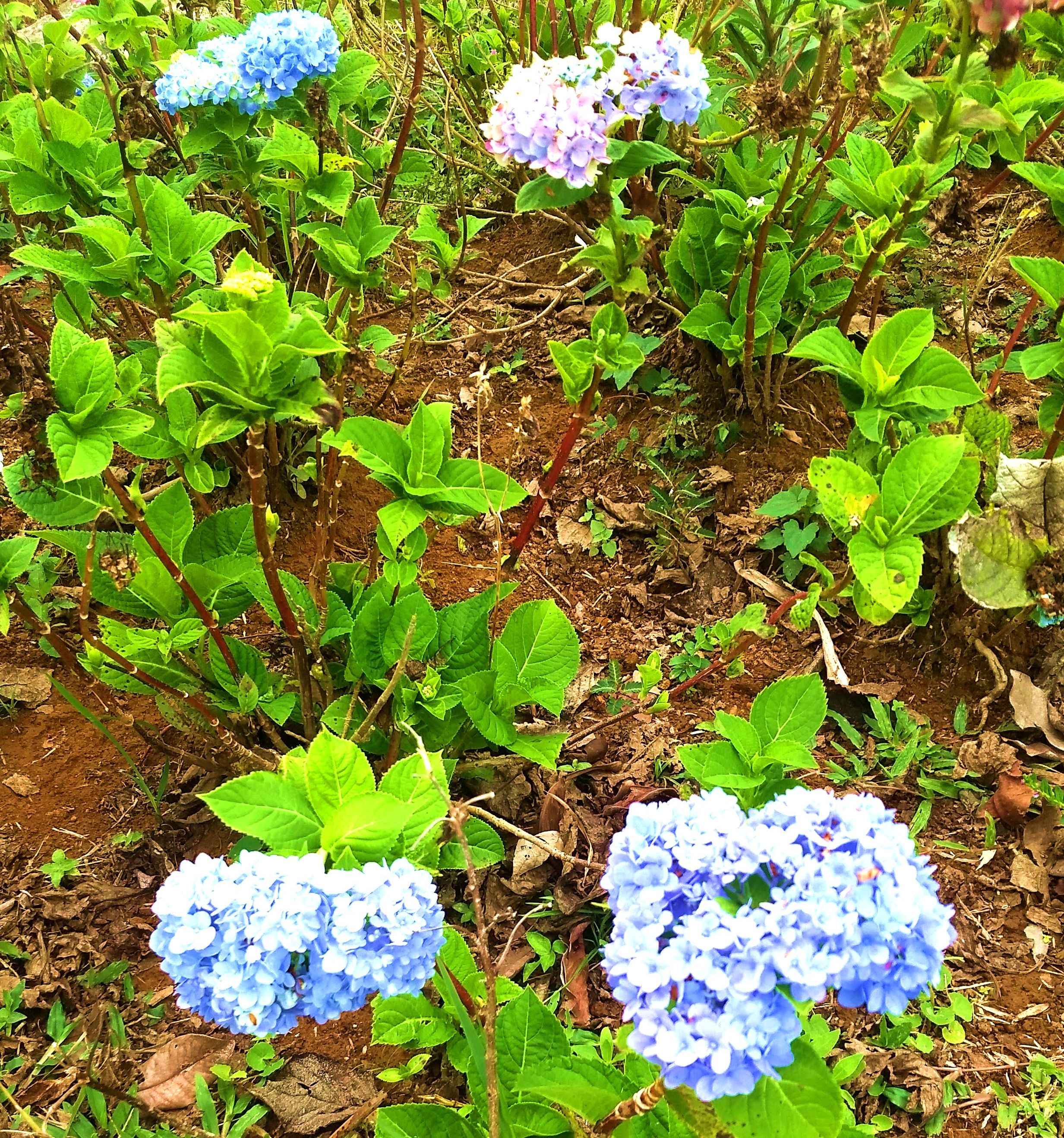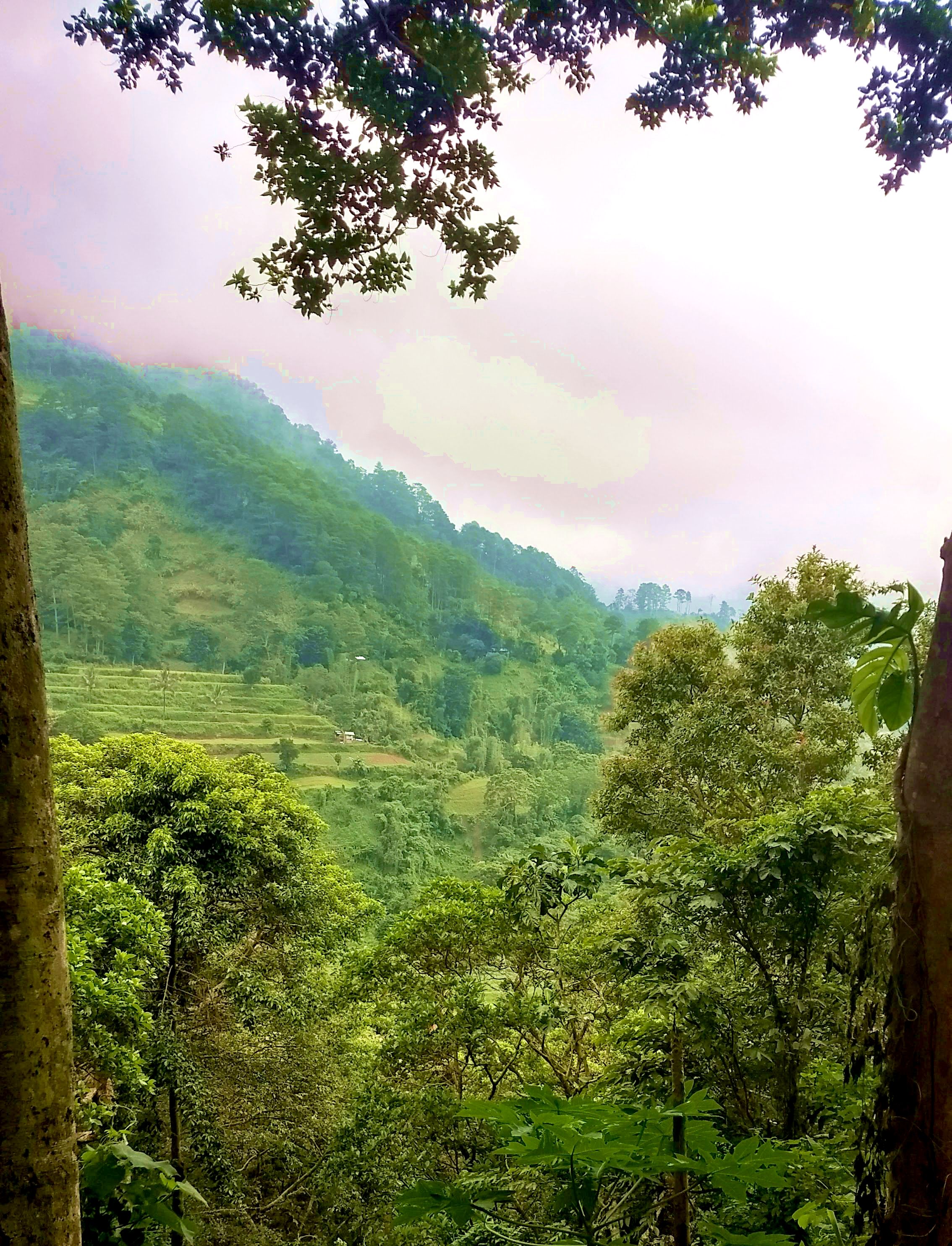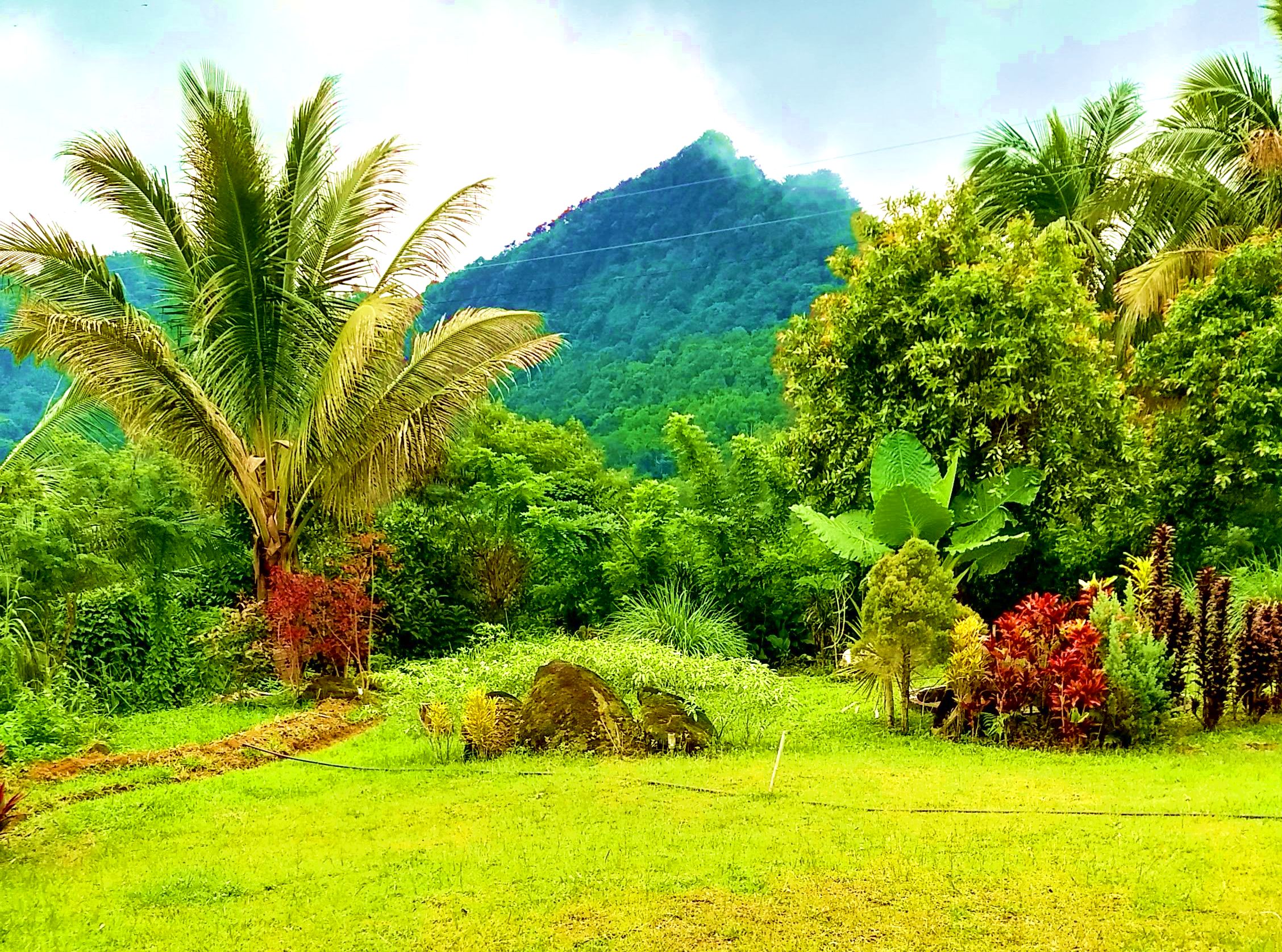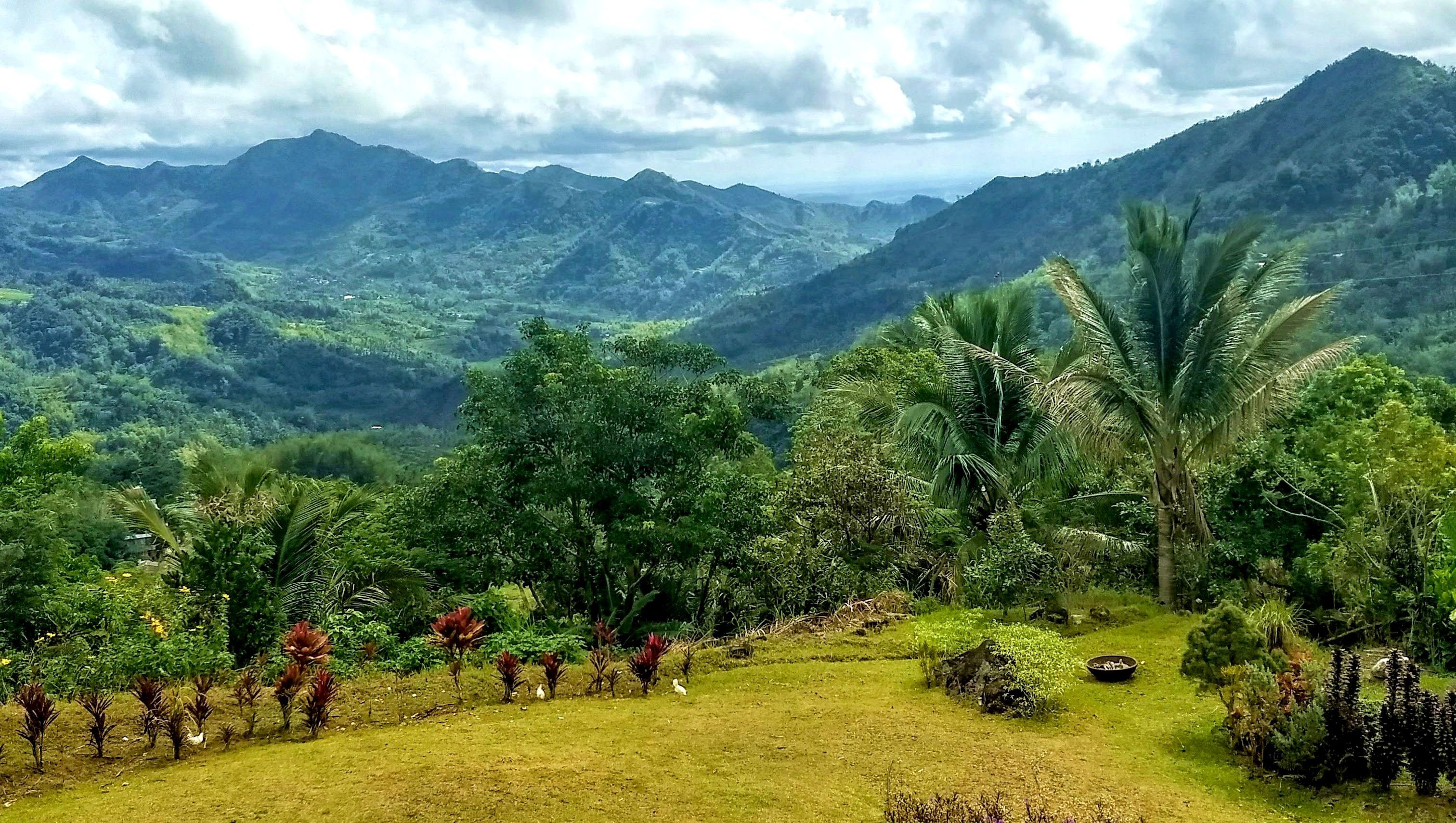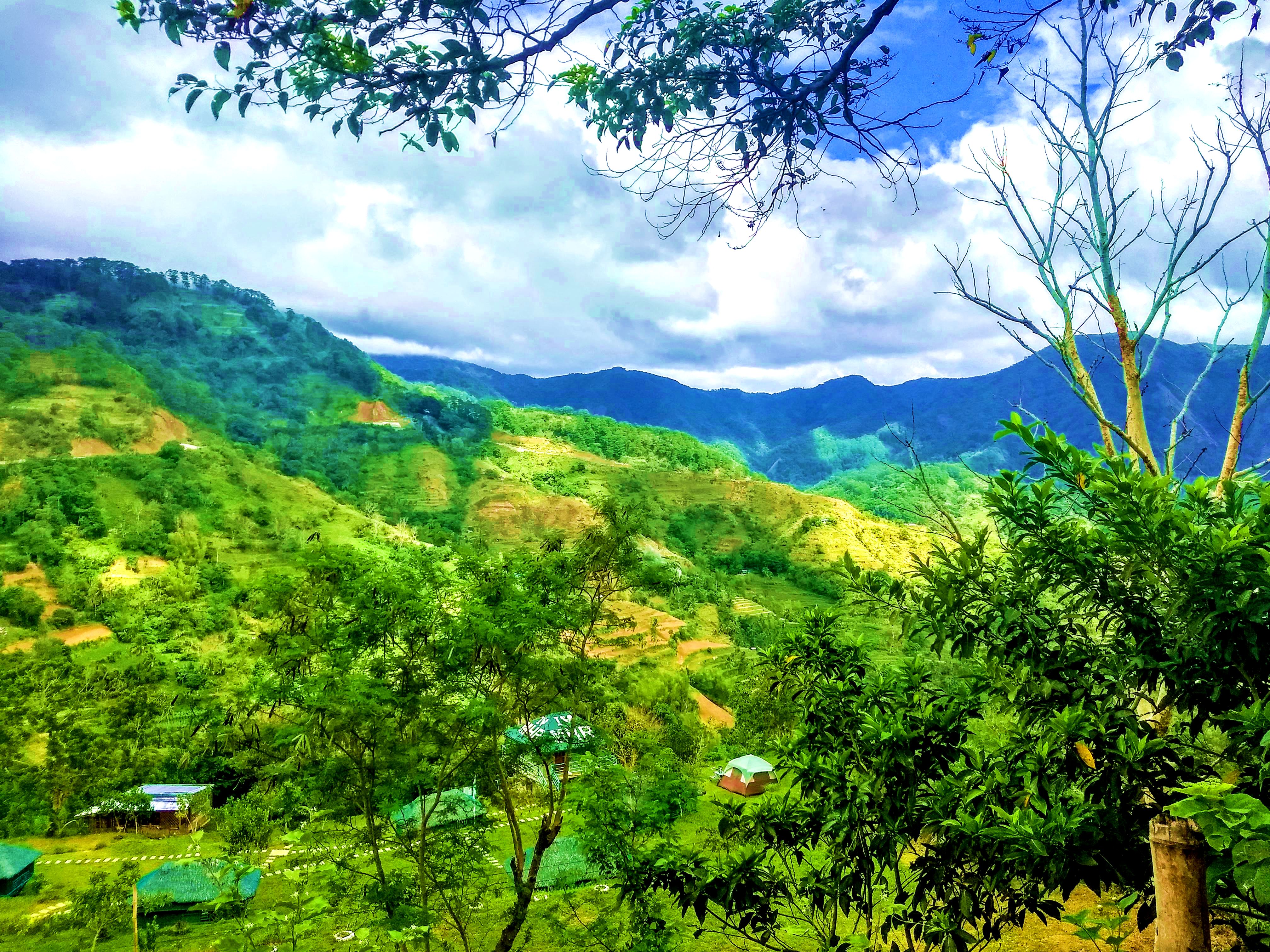April 2018
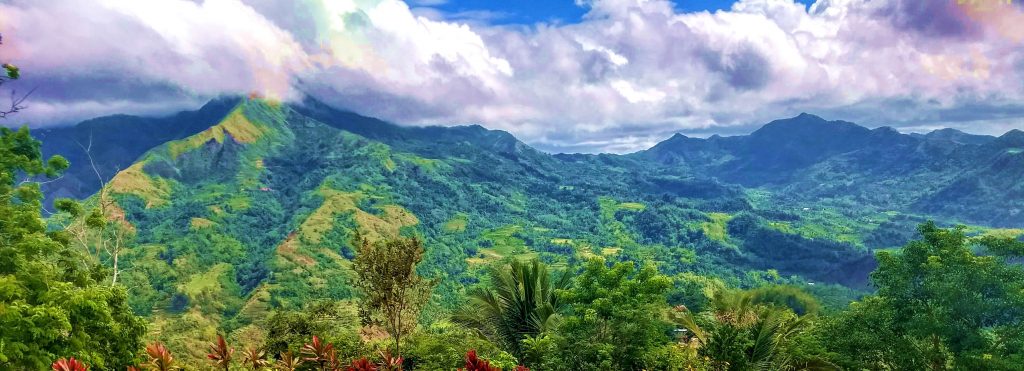
Mountains near Bucari
I will own it: there may be a degree of hyperbole in the title for this post. There are no Matterhorns on display, no eternal snows (thank heavens!), nothing that a hiker with a good pair of boots and a few hours to spare can’t conquer, so yes, “Alps” may be overstating the case a bit. But if like me you spend most of your time in land as flat as a pancake — a fair description of the Iloilo coastal plain, quite without any hyperbole at all — when you go into the mountains you get excited and your adjectives absorb some of the adrenalin. Since I’m a mountain lover from way back, going to Bucari always sends me into a rapture. My eyes can cannot sate themselves on the contours, the textures, the chiaroscuro of sunny peaks and shaded valleys. So forgive me if I wax a bit hyperbolic. I believe by the end of this piece you’ll see why it comes over me like a fit.
But let’s begin at the beginning, which is in Iloilo. Bucari lies about 50 kilometers (31 miles) northwest of Iloilo, so it’s within easy striking distance for anyone with wheels of some sort. Having cut my teeth on motorbiking mountain roads through tackling the steepnesses of Camiguin Island, the road to Bucari seems to me like a Sunday drive. I’m now the proud owner of a brand new motorbike with 150cc’s of internal combustion firing beneath my derriere, so I have enough power to zip up any gradient you please. Inclines are not in the picture, however, for fully two-thirds of the trip. As I said, the Iloilo coastal plain is as flat as a pancake — which does nothing to detract from its charms, I hasten to add. But if, like me, you’re hungry for elevation you will search in vain for something that qualifies even as a hillock. What will draw your eye is the outline of the mountain range in the distance, often shrouded at the top by cloud or mist, but visible all the same and offering the promise of the Real Deal. I always enjoy the trip across the flatlands because I invariably find interesting things along the way — wildflowers, animals munching by the roadside, the intense green of the rice fields, or perhaps a particularly beautiful skyscape formed by the puffy white clouds. But the mountains call, and my hand stays firmly on the throttle.
In large continental mountain ranges foothills are often a fairly lengthy preamble to the big peaks. One thinks of the Rockies, for example, or the Himalayas, where the swells begin many miles before you find your neck tilting back to scan the heights. The mountains of Panay are quick and dirty by comparison, since the tectonics that raised them operate on a much smaller scale. I’d like nothing better than to load you up like a freight train with links about the geology of Panay and the central mountain range, but alas, pickings are extremely slim. From the few bits of information I’ve managed to find, it appears that nearly all the rock is sedimentary and dates from nothing earlier than the Miocene period (23 to 5 million years ago) — Tertiary, in other words, so all new-kid-on-the-block stuff, geologically speaking. And one should use the word “rock” in the loosest possible sense, because it fairly crumbles to the touch. When heavy rains come to Panay you can be sure there will be landslides in the mountains, because the hills may seem solid when dry but are in fact held together by spit and baling wire, as we say in my neck of the woods. A rapid course of rainwater down the side of any of the mountains you see here will rip away the vegetation and send great slabs of the mountain tumbling down its side. Evidence of such tumbles abound everywhere a road has been cut through the hills. We, however, being the clever things we are, have chosen a brilliantly sunny day for our excursion, so let’s not bog ourselves down in the whatifs. No point in asking for trouble, that’s my take on the matter.
The town nearest Bucari is Leon, which is a thriving little place close enough to Iloilo to leave the inhabitants feeling plugged in to the mainstream of the Province but far enough away to make doing things their own way seem by far the best approach. A few miles before you reach Leon the landscape begins to undulate and the swells of the hills loom closer. But Leon comes before the real mountain scenery begins. So while we’re here, we might as well take in a few of the sights. One sight not to be missed in my humble opinion is the play area in the main plaza across the street from the public market.
I’ve no idea whose whimsical imagination devised the playground equipment, but I would hazard the guess it was either somebody who read a lot of Mother Goose as a child with perhaps rather too active an imagination (and lots of sisters), or somebody who has had — perhaps still has, who knows? — some kind of name in the world of drag. Who else would dream up a slide for kids that looks like it should have been a prop in “Priscilla Queen of the Desert?” If the rest of the creature to whom this shoe belongs should suddenly appear before us attached to it, you know, I know, we all know that it would have a feather boa around its neck. No other conclusion is even remotely possible. I’ve never seen a child go down it, perhaps because the apparition inspires such astonishment that the notion disintegrates as one stares in amazement. It’s brilliant and I pay it a visit every time I go through town. It’s surely worth a dissertation or two analyzing influence from Manolo Blahnik or Jimmy Choo.
If you don’t stop in Leon on your way through town you clear it in about five minutes. After you cross the bridge just outside the town center the landscape begins to feel very different. The slopes come down to the road and you begin go up hill and down dale as you continue your route to Bucari. The high mountains still appear at some distance, but you see the progression of rising terrain now, the peaks don’t just sit on the horizon as a solid band in profile against a level landscape. The party is about to begin. The trees hug the sides of the road and provide lovely patches of shade that cool your face and relieve your eyes for a moment from the brilliant sunshine. That contrast between sun and shade is part and parcel of travel in a mountain landscape. Finding it just outside Leon tells you that you’re nearly in The Zone.
When I’m on the motorbike I can stop as I like, which is the great joy of having one’s own transportation and the freedom that comes with it. I can indulge the geologist, the botanist and the landscape photographer in me in whatever measure they require for their satisfaction. The geology of the mountains results in some astonishing sights. Peaks with points like a needle suddenly appear seemingly out of nowhere. The geologist in me wants to see the rock and the tilt of the soil layers in the hillsides (and it is extreme, in some cases almost vertical). The botanist is all a-flutter with the enormous variety of leaf shapes and the changing vegetation as altitude increases. The landscape photographer is perhaps the most demanding of the lot, because at every turn of the road a new vista opens and the variety of the peaks in such a geologic domain as this brings constant surprise and a view more than worthy of capture. He always goes overboard, in point of fact, and has to be reined in a bit. After all, we need to get to the summit, don’t we, so let us not tarry too long. If he had his way, there would be a gallery of landscape photos here instead of words, and his point is well taken — pictures are indeed worth of lot of words, perhaps even a thousand 🙂
As you near the top of the mountain ridge where Bucari proper sits you come across the Pineridge Bucari Resort (website here). What a lovely place to soak up the views while sitting on the second floor balcony enjoying coffee. There is a lovely garden area around the cafe building where the views are superlative. On certain trips my destination is the Pineridge cafe itself for the ambiance, the grounds and the views, which offer a completely different environment from the Bucari campsite further up the road. So if you’re after a more European kind of experience, Pineridge is the place for you. It reminds me a lot of places I came across while doing mountain trips in Germany. No matter how high one climbs, one is bound eventually to come upon a cozy cafe with proper cups and saucers. That’s the sense the Pineridge cafe provides. There are times when I want to luxuriate in the visual splendor of the place while having my creature comforts, too. Pineridge accommodates that intent to perfection.
Just a few kilometers past Pineridge, after passing through a rough and tumble village area, you come at last to the Bucari campground site. This is, ostensibly, the Main Event of a trip to Bucari. If you’re with Filipinos, they may prove anxious to get jackets and ski hats out of the backpack to arm themselves against “the cold.” Cold … to a Northerner like me, you’re lucky if you get to “cool.” “Comfortable” is the most apt description of the temperature in my humble opinion, but I’m a foreigner so I have no idea what I’m on about, of course 🙂 Bring a jacket if you like, but to my certain knowledge nobody has ever needed Medivac service from the Bucari campground for frostbite. Just saying …
The campground (information available here) is a pleasant place if your agenda is either to hang out among the pines or to hike around the area, especially to the summit where there’s a viewpoint. It’s beautifully planted, thus speaks the botanist in me, who spent as much time going through the planting beds as looking at the trees. I nearly fell to my knees with clasped hands when I came across a superb individual of Brugmansia suaveolens at the top of the campground’s pathway leading to the nipa huts where one may take one’s lunch. It had been a long time since I’d seen one, a few years ago in Thailand, and this one was taller than me and covered in blossoms. So of course the adrenaline kicked in big time. Even now it’s a testament to my powers of self-restraint that I don’t go on about it for two whole paragraphs using OMG every two sentences. I’ll let the photos replace my thousand words 🙂
So, to the matter of pines. When you’re in the Philippines, pines and mountain areas, if they happen to occur together, are a Big Deal. If there’s anything over which I should wax hyperbolic with regard to Bucari, it’s the pine trees (and the strawberries, of course, since they will grow at high elevation, too). There are relatively few places in the Philippines where the climate is cool enough to support pines. The most famous such place is Baguio, on Luzon Island, north of Manila. It’s a popular trope that you go to Boracay for the beach and to Baguio for pines and the “cold” weather. But lo and behold, there are pines on Panay and on Negros, as well. So being on Panay as I am, there’s no need to jump on a plane and fly to Luzon to see pines in a tropical habitat. I just need to get on the motorbike and zip along for a bit more than an hour and BAM, I’m right in the middle of them.
As I’ve said in another blog post, where I come from pines are a dime a dozen and about as exciting as support hose. I grant them the full majesty of their being, to be sure, and heaven knows I’ve come across many a fine pine tree in my time, but at the end of the day a pine is a pine. They do green very well, one must concede them that point. But beyond that, they appear to lack the self-assertion, one might even say the imagination of the angiosperms. Ah well, it takes all kinds, as the saying goes … The pines in Bucari appear to me related to the longleaf pine (Pinus palustris) of the southeastern United States. They have similarly long and soft needles, three to the bundle, and the bark looks remarkably similar, as well. The species in the mountain areas of the Philippines is, I believe, Pinus kesiya. They lord it over the Bucari campground quite regally and create exactly the kind of atmosphere someone eager for a change of pace from coconuts and bananas will crave. What I found to be most striking, however, was the juxtaposition of pines with other plants that are as tropical as the day is long. The tropical and the temperate co-exist in this habitat, with visual results that are as striking in their own way as is the high-heel slide in the Leon Plaza. As I walked on one of the hillsides near the campground I came upon a patch with pines soaring up to great heights and at their base were huge, tropical leaves of a plant that looked like taro. The sight shook me from my daydreaming about walking the pine-clad hills at home as I’ve done for so many hours and miles. We’re definitely not in Kansas anymore, Toto. Pine trees and bananas cheek by jowl … whoda thunkit. Shaken out of my reveries about entire forests of conifers I began taking careful notice of the variety of species I found in my field of vision. Several years ago I did a species inventory on an 80-acre property my family owns in the northeast corner of Washington State. The total number of tree species amounts to 14 and the major understorey plants number less than 30. Within a few minutes of attempting to size up the species total on that small hillside at Bucari, I lost count and decided to leave the biodiversity dynamics to Mother Nature. I know when to cry uncle …
And by the way, let the last picture in the row serve to remind you to bring an umbrella. You’re in the tropics and what begins as a sunny day can quickly turn into a downpour, as I’ve learned the hard way at Bucari on more than one occasion. So be a good Boy or Girl Scout and go prepared. Semper prep, as the saying goes.
I confess that when I go to Bucari — which is often, at least once a month, usually more — I am after the vistas. Consequently, the terrace of the Pineridge Bucari resort is most often my destination, not the campground. Once when I was hiking in Germany with a friend she stopped when we came to a viewpoint and said as she looked out over the landscape, “Ich kann mich einfach nicht satt sehen.” Meaning, I could look at the view forever. Precisely that feeling comes over me when I’m up high enough in the Bucari mountains to encounter views on a panoramic scale. It’s a magical landscape at so many different levels. With a wide view the changes of light and shadow across the peaks and valleys are like a story unfolding. At close range the exuberance and diversity of the plants is fantastic. No wonder I keep going back, again and again.
Stopping at Pineridge Resort on the way down it’s time to appreciate the fine gardens there, which sport some species those of us from cooler climes will recognize immediately and be hard pressed to find in the lowlands:
Going down the mountain is as much fun as going up, of course, and the vistas the trip back to the lowlands affords are the perfect enticement to bring you back up the mountain again for more, more, more. As long as I have a motorbike and the wherewithal to get myself up the mountain, you can rest assured I’ll keep going back time after time. These pics should make it clear why:


